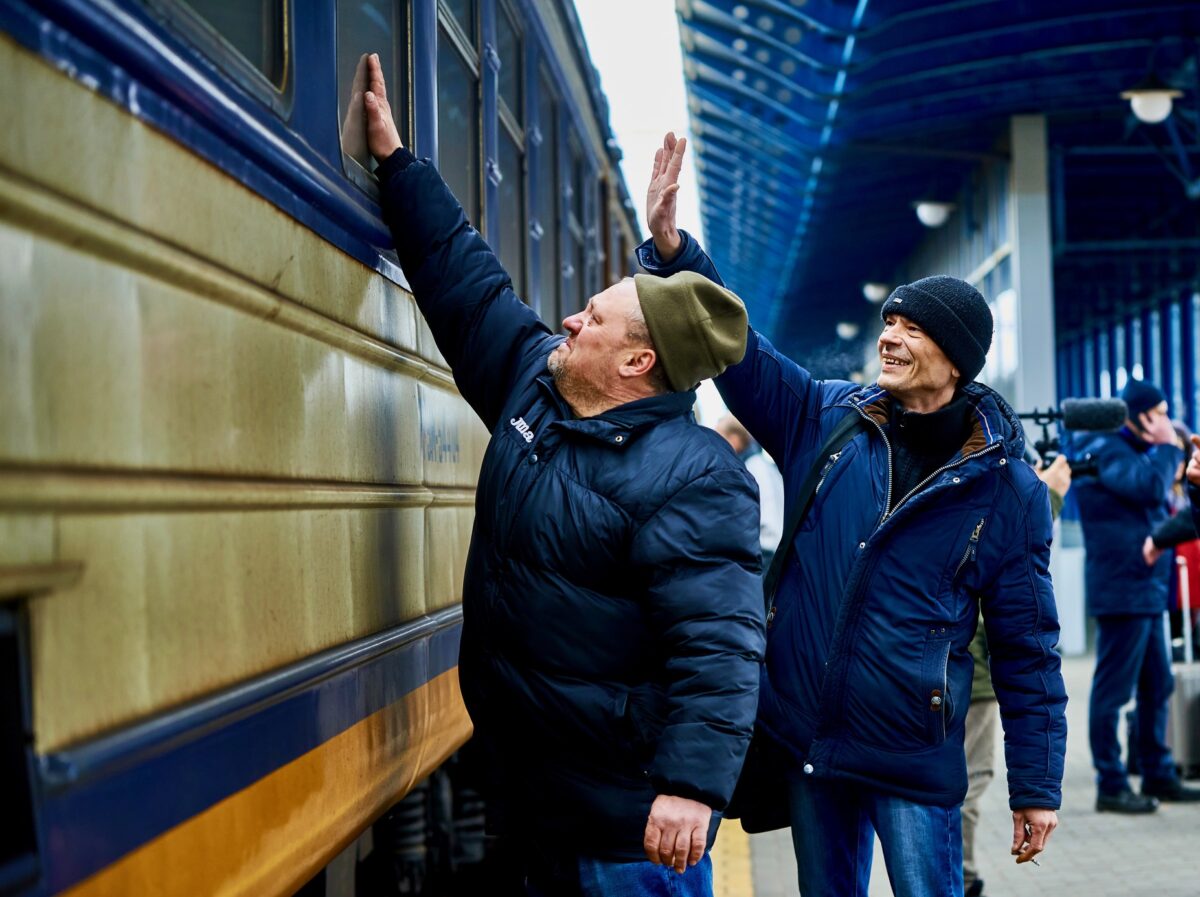In mid-August 2023, British Ambassador to Ukraine Dame Melinda Simmons took the intercity train from Kyiv to Lviv. In normal circumstances, her journey would have been entirely unremarkable; at a time when Ukraine is fighting for national survival against a genocidal Russian invasion, the mere existence of this daily train service is a minor miracle on rails. “I know everyone says this but seriously,” tweeted the British diplomat. “How Ukraine fights off an existential invasion by Russia and still ensures commercial trains leave and arrive on time, everything clean, functional inside, and safe, tells you all you need to know about Ukraine.”
Ambassador Simmons is far from alone in pointing to Ukraine’s train services as evidence of the country’s indomitable spirit. In the eighteen months since the onset of Russia’s full-scale invasion, national railway operator Ukrzaliznytsia has inspired dozens of feature stories in the international media hailing the company’s 230,000 employees as unsung heroes of the Ukrainian war effort. This praise is easy to understand: in uniquely challenging circumstances, Ukraine’s trains have continued to run with a regularly and punctuality that would be the envy of many other European rail services operating in peacetime conditions. In the process, they have served as a vital humanitarian, economic, and diplomatic lifeline for the whole country.
With Ukraine’s airspace closed to all flights due to Russia’s invasion, the burden of evacuating the civilian population in the early months of the war fell largely on Ukrzaliznytsia. During this period, the railway operator managed to carry approximately four million people to safety, with emotionally-charged images of crowded train carriages and railway station farewells capturing the mood of a deeply traumatized but defiant nation. This was extremely dangerous work; in one particularly savage attack, a Russian airstrike on Kramatorsk railway station in eastern Ukraine left more than sixty people dead. No wonder Ukrainians have taken to calling their railway workers “Iron People.”
During the first year of the war, Ukrzaliznytsia CEO Oleksandr Kamyshin came to symbolize the indefatigability of Ukraine’s rail services. With his hipster haircut and beard, thirty-something Kamyshin was very much part of the emerging generation of young Ukrainians leading the country’s fightback against Russia. Like many of his colleagues in senior state positions, he proved adept at social media communications, often posting morale-boosting messages while expressing understandable professional pride in his team’s ability to make sure the country’s trains continued to run on time. Kamyshin’s success was recognized and he was appointed Minister of Strategic Industries in March 2023, where he now plays a pivotal role in weapons production and the development of Ukraine’s military-industrial complex.
On the economic front, Ukraine’s railway operator has been instrumental in enabling businesses to overcome the obstacles created by Russia’s naval blockade of the country’s Black Sea ports. With traditional maritime trade routes no longer available, Ukrainian companies have had to rely increasingly on rail alternatives. Ukrzaliznytsia has addressed this immense logistical challenge by dramatically increasing freight services while upgrading or constructing cross-border rail links with neighboring countries. Ukrzaliznytsia has also been at the forefront of efforts to keep domestic trade routes open, with the revival of train services now a routine feature of the liberation process in towns and cities freed from Russian occupation. “Once we beat the Russians back, then we start running trains,” commented Kamyshin in a spring 2023 interview.
Another eye-catching aspect of Ukrzaliznytsia’s wartime functions has been as the preferred method of transport for international politicians and celebrities visiting Ukraine. With flights no longer an option, most dignitaries have chosen to travel via rail to Kyiv from Poland. This trend quickly took on iconic status during the initial few months of the war, with early guests such as British Prime Minister Boris Johnson making a point of posting photos of their train journeys on social media. Indeed, following one of his numerous subsequent trips to the Ukrainian capital, Johnson would even be pictured in London sporting a souvenir Ukrzaliznytsia hat. Perhaps the most high-profile passenger of all was US President Joe Biden, who arrived in Kyiv via train in February 2023 for a visit that underlined America’s commitment to stand with Ukraine while also demonstrating considerable faith in the reliability of the country’s rail service provider.
Ukraine is certainly not short of heroes in these historic days. Nevertheless, the service provided by the country’s hundreds of thousands of railway workers deserves special recognition. Whether they are running trains at great personal risk to evacuate civilians from front line cities, ferrying refugee families home from Poland to visit loved ones, or bringing the latest delegation to meet President Zelenskyy in Kyiv, the Ukrzaliznytsia team are an indispensable element of the country’s war effort. They are ordinary and unassuming folk doing extraordinary things, and their ability to make the trains run on time during Europe’s biggest war since World War II is a genuinely staggering achievement.
